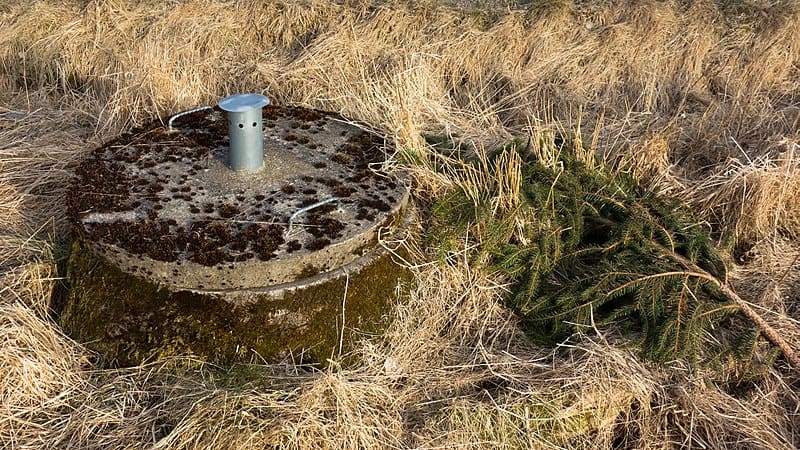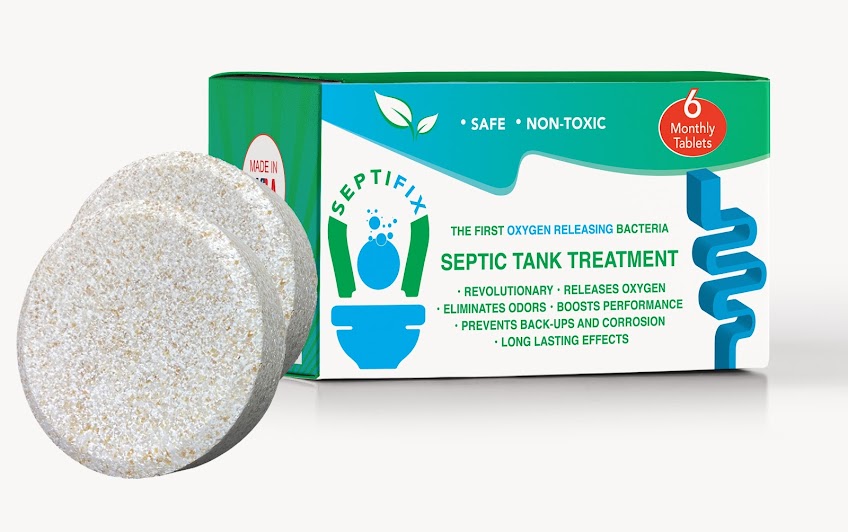10 Pros and Cons Of Septic Systems
The on-site dedicated septic tank system is one of two main methods for draining wastewater out of homes and business establishments. This system requires a septic tank, buried underground somewhere on the side or back part of a property. This septic tank receives wastewater from toilets, showers, sinks, and other drains within the property. Inside the septic tank, the solid wastes settle down to the bottom and form what we call the sludge layer. Whatever oil and grease are contained in your wastewater will float to the top and form the scum layer. Compartments and a T-shaped outlet in the septic tank prevent the sludge and scum from leaving the tank and traveling into your drainfield area. Only the liquid waste (or effluent) leaves the septic tank and goes on to the drainfield.
The second main method of wastewater disposal and treatment is the municipal sewer lines, run by local governments. The key difference between the two systems is a septic system serves a single property, while municipal sewer lines connect entire sections of cities. Whether a property has one or the other type of system will largely depend on location — sewer lines are more common in urban areas while septic tank systems are typical among rural properties.
The advantages of a septic tank system over a municipal sewer line primarily relates to cost and the environment. Simply, you won’t have to worry about monthly service fees or about doing harm to the environment with wastewater when your property has its own septic system.
Septic System Pro’s
Pro #1 Septic Tank Options. There are various options for septic tank types that offer the advantages of durability and ease of maintenance. A particular septic tank’s advantages and disadvantages will largely depend on the material it’s made of.
| Types of Septic Tanks | Advantage | Disadvantage |
| Concrete | Life span of several decades | Prone to cracking |
| Steel | Life span of up to 25 years | Prone to rust corrosion |
| Fiberglass or Plastic | Rust-proof and not prone to cracking | Lightweight material makes it vulnerable to above-ground pressure |
| Aerobic | Highly efficient; requires smaller drainfields | Runs on electricity; costly to install and maintain |
Pro #2: Dedicated to Single Properties. There is ownership and liberty as you manage your septic tank independently rather than relying on the local town or city government. This also allows for functional efficiency.
Pro #3: Cost Efficiency. A new septic system will typically cost significantly less than the installation of municipal sewage pipes. A septic system is possibly especially cost-effective if your home or establishment sits on a property bigger than one acre. Since a septic system runs independently from a municipal sewer system, you save on city-mandated monthly fees. With adequate maintenance, your septic system will last you many years, potentially as long as you occupy your home or business property.
Pro #4: Environmental Safety. It’s of popular opinion that septic systems are safer for the environment because they do not contaminate groundwater like potentially leaky sewage lines can. When a septic system does leak, the damage is contained to a particular patch of property, and will not inflict city-wide consequences. Septic tanks diminish ground pollution by way of natural filtering by drainfields or leachfields. By the time the effluent enters the field, any bacteria present have been removed. Furthermore, the water-recycling method of septic tanks is quite beneficial to surrounding flora and fauna. The treated water helps plant growth, which in turn provides nourishment for insects, birds, and other small animals.
Pro #5: Longevity. A properly installed, adequately-maintained septic system can last you 40 years or more. It is important to have it inspected and serviced every one to three years and to observe healthy septic-related habits to keep your system functional for several years.
Septic System Con’s
Con #1: Impermanence. Although septic tanks are built to last for decades, more or less depending on the type that you have, septic tanks will eventually fail and require replacement. This eventuality requires effort and, yes, cost. A new septic tank can easily cost $5,000 or more, inclusive of the unit and installation fees. The effectiveness of a septic system is diminished with poor maintenance and excessive chemicals running down the drains.
Con #2: Cost. The cost of installing and maintaining a septic tank system can be quite expensive, dependent, too, on levels of usage. Electricity is needed to run a septic system, which translates to additional costs. The frequency of maintenance is proportionate to the number of property occupants and their respective bathroom, kitchen, and laundry habits. The contents of the septic tank need to be pumped out, ideally every two or three years, at least. If the tank is left un-pumped, it can lead to rapid clogging in your drainfield, which can result to premature failure.
Con #3: More Effort toward Efficient Water Consumption. This isn’t exactly a negative, but consistent and conscientious water usage habits (showers, laundry, and dishwashing) need to be observed by everyone. High water volumes can be burdensome on your drain pipes and septic tank. Likewise, water fixtures need to be constantly checked for leaks to ensure they are not adding to the water volume going into your septic tank.
Con #4: Meticulous Toilet and Drain Usage. With a septic tank, you will need to be more aware and careful of what you allow to go down your drains and toilets. Household chemicals, oil and grease, and other non-biodegradable matter can be devastating to septic systems and result to damages, sewage back-ups, and repair costs.
Con #5: Additional Property Responsibilities. You’re responsible if anything within your septic system malfunctions.When your home is hooked up to a municipal sewer line, the only thing you should be concerned about are the pipes on your own property. Beyond that, it’s your local government’s jurisdiction. With a septic tank, you are responsible if anything goes wrong. You will additionally have to monitor your property logistics. Tree roots within the immediate area of your drainfield lines may infiltrate and damage your system. Also, you will need to keep swimming pools (whether above or in-ground) away from your drainfield lines.
Is Sewer Better than Septic?
In many ways, sewers and septic systems offer very similar benefits. Both systems filter out your black- and greywater. From a sanitation perspective, both systems filter bacteria and pathogens from wastewater before it is released back out into the environment. Basically, both sewer and septic offer reliable drainage of wastewater with minimal problems most of the time.
Though sewer systems are more common because they’re funded and maintained by local governments, septic systems are becoming more popular as an affordable, environmentally-safe alternative that offers property owners full control over their drainage.
Sewers are generally believed to be the cheaper, easier option because there is little to no maintenance involved, from a property owner’s perspective. Septic systems, on the other hand, are generally the responsibility of private property owners. Regular and periodic pumping and inspection of septic tanks are a must for every property owner, at his or her own cost.
While the considerable costs of septic system repairs are often discussed, what isn’t as well known among property owners is the fact that municipal sewer systems can likewise come with some considerable costs, too. For starters, property owners can be charged high local fees, not just for monthly service, but for installation and repairs as well. In contrast, the cost of having a septic tank is mostly consistent with just the regular pumping. Adequate inspection and maintenance of septic tank systems greatly contribute to avoiding damages that will require costly repairs.
What is perhaps the most liberating aspect of owning a septic system is the ability to set one up virtually anywhere in one’s property. All you need is healthy soil. If your new property lies in a remote area, connecting to a sewer system can be costly and difficult. In some cases, connecting to a municipal sewer line may not even be possible due to the absence of nearby sewage lines. In these situations, septic systems are the more viable and cost-effective option.
To be fair, sewer systems have the capacity to handle large volumes of wastewater from several properties at once. They are built to withstand natural forces such as heavy and torrential rain. And because management and maintenance of sewer lines are the local government’s responsibility, it is easy to assume that sewer systems will be better managed and well-financed. However, the independence of maintaining an on-site dedicated septic system releases you from potentially expensive and unforeseen cost mandates.
If you don’t mind the municipal obligations that can factor into your dependence on a centralized sewer system, then that might be a more suitable option, especially if you’re likely to change addresses every few years or so. But if you prefer independence as a property owner and are looking to choose a remote or customized office or residence, then a septic system would be the more ideal option for you.
Why Use Septic Systems?
As the general public becomes better-informed about the struggles and needs of the environment, septic tanks are becoming a more popular option, especially among new property owners. What contributes to this shift in general opinion is that septic tanks are regarded to be the more environmental-friendly alternative over old-fashioned municipal sewer systems.
Energy and (potentially toxic) chemicals are used to pump and treat wastewater in sewer systems. There is also growing concern over the possibility of overflows in treatment plants in the event of intense rains and/or overloads. This is especially true in highly-populated municipalities and inadequately stable government-run treatment plants.
None of those problems are an issue with dedicated septic systems. These pump and treat wastewater without the need for energy or chemicals. With adequate monitoring and maintenance, septic systems are not as prone to overflows as are municipal treatment facilities servicing communities of houses and establishments. With septic systems, wastewater is carried away in even, manageable amounts.
How Long Do Septic Systems Last?
The life expectancy of a septic tank depends largely on its material of construction. The life of septic system piping, on the other hand, is dependent on the risk of damage from vehicle and machinery traffic, infiltration and clogging by tree roots, or flooding by groundwater.
Concrete septic tanks are prone to cracking and corrosion. Concrete tanks are durable enough to last several decades, but cracks can occur much sooner if it was made with low quality concrete mix, further aggravated by poor septic system maintenance. Cracks in concrete septic tanks can be problematic as effluent can easily seep out of and groundwater can seep into the tank. Septic tanks made of concrete require regular, periodic inspection and maintenance.
Steel septic tanks are designed to last about 20 to 25 years, at most. Steel septic tanks are susceptible to rust corrosion even before the 25-year lifespan is reached. Similarly, the steel septic tank cover can rust through and deteriorate, posing a serious physical hazard of caving in with even just the weight of a person. Steel septic tanks require regular and periodic manual inspection and maintenance.
Plastic or fiberglass septic tanks are water-resistant and less prone to rust, corrosion, and cracking. However, the lightweight plastic or fiberglass material it is made of makes it susceptible to structural damage. Skilled installation is required to avoid any damages to a plastic or fiberglass tank. Also, it is important to remember to never drive any vehicles or operate heavy machinery over this type of tank. The lighter material can also cause a plastic septic tank to shift in the ground in wet soil conditions.
The septic tank is but one part of an on-site wastewater treatment system. Taking care of the septic tank will, however, extend the life of the more part of your septic system: the absorption system, leach field, or drainfield.
The life span of a drainfield varies widely by its installation type: is it a conventional soil absorption system or is it an alternative sand bed filter system? The longevity of a drainfield also relies on soil conditions (clay, rock, or sand). Finally, and most important of all, the frequency of septic system maintenance and cleaning affects the life expectancy of a drainfield.
All in all, how long an entire septic system lasts will depend on several factors, namely:
- The frequency of septic tank
pumping. The most significant step you can take
to extend the lifespan of your septic system is to have the septic tank cleaned
or “pumped” regularly and periodically. Two to five years is a good
average, depending on the number of property occupants and their usage habits.
- Septic system usage. What you flush down your toilets and pour down your drains will greatly affect your septic tank’s length of life. Be careful of flushing and draining down non-biodegradable matter, oil and grease, and other toxic chemicals. Be aware of the septic-safe cleaning aids that you use on your sinks, toilets, and drains. Also, the volume of water usage is a factor. Excessive or wasteful water usage can overload your tank. Excess water hampers the breakdown of the solid wastes before the increased water level in the tank forces solid matter to pass out of the tank and into the distribution lines that are built to handle only liquids, effectively blocking your lines or pipes.
- Water usage. The amounts of water being used by all occupants in your home or business establishment also affect the drainfield’s lifespan. Unusual and excessive levels of water usage stemming from wasteful consumption, heavy laundry and dishwashing loads, constantly running toilets, and leaky water fixtures contribute to an overloaded and, eventually clogged, septic system.
- What your septic tank is made of. Whatever material your septic tanks is made of, make sure that it remains suitably functional relative to your property’s physical and soil conditions. Also, that you subject it to adequate inspection and care.
- Tree roots. The infiltration of tree roots into your septic tank system is another common problem you need to watch out for. Tree roots are naturally drawn to the high concentrations of nutrients and moisture that are present in your septic tanks and lines. It is common for tree roots to gradually grow around and into your septic tank and lines, encroaching on whatever small leaks and cracks that might be present, eventually aggravating them over time. Professional septic tank installation should always take into account the growth of nearby trees and plants to diminish this possibility.
- Flooding and water runoff. It is important to divert surface or roof runoff away from your drainfield area. If you are just about to install one, make sure to situate your septic soak-away bed far away from: wet soil, high water table, creeks or streams that are prone to flooding. Taking these precautions does a lot in improving the lifespan of your septic drainfield.
Understanding the proper and necessary procedures for septic tank care and maintenance will only help you in prolonging the lifespan of your on-site wastewater treatment system and maximizing its functionality.
Whether you prefer one or the other system of wastewater treatment will depend largely if you are the type of property owner that enjoys the liberty and responsibility of maintaining your own septic system or if you would rather have the reliability and convenience of being connected to a centralized sewer line. However you decide, the most important thing is that you stay prepared in the event of an emergency and that you have a credible septic service expert who you can trust to handle routine plumbing tasks.
https://paradisevalleyseptic.com/buy-house-septic-tank-pros-cons-septic-systems/
https://www.mrrooter.com/oneida/about-us/blog/2017/march/pros-and-cons-of-a-septic-tank-system/











